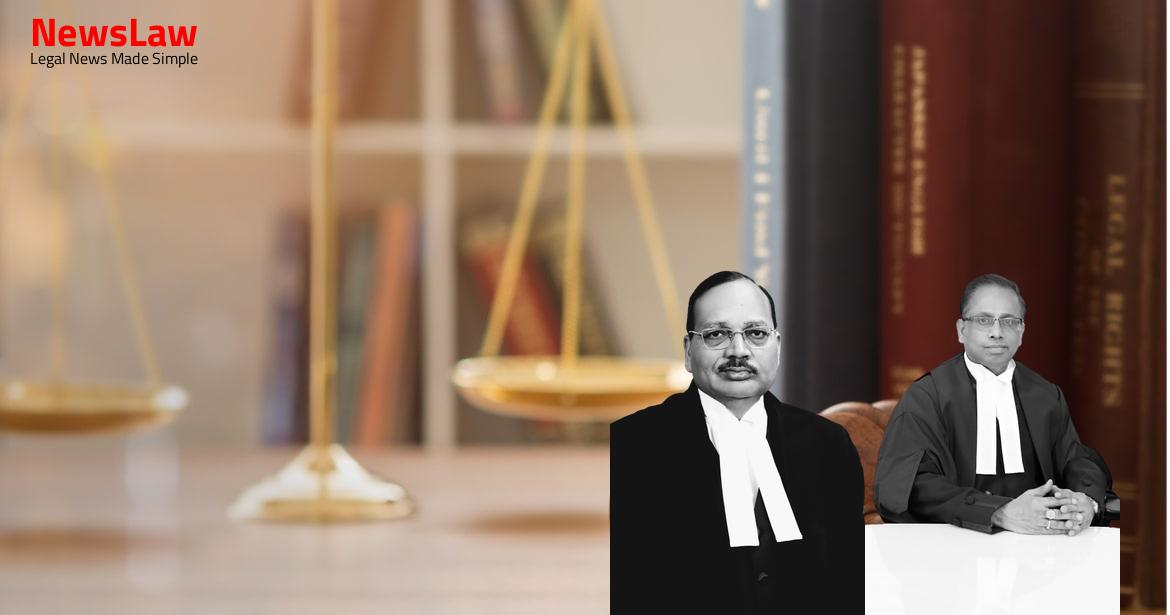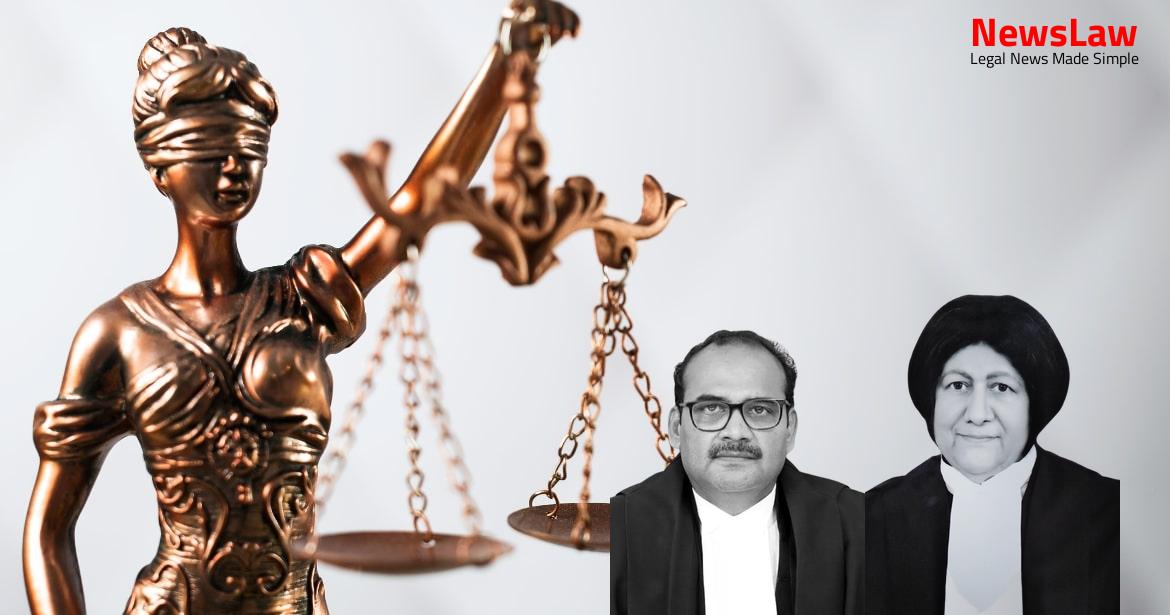The Supreme Court recently delivered a crucial judgment in the case of NIACL vs. Flat Products, revolving around a dispute over the calculation of depreciation in an insurance claim. The case delves into the intricacies of policy provisions, surveyor assessments, and the Reinstatement Value Clause. Both parties, NIACL and Flat Products, presented compelling arguments, leading to a significant legal battle that has now been settled by the highest court in India.
Facts
- The Insured placed an order with M/s Flat Products for reinstating the 20 Hi Cold Rolling machine after it was destroyed in a fire.
- The Insured paid Rs.3,75,00,000/- as advance payment to M/s Flat Products for the machine reinstatement.
- A claim for Rs. 35.08 crores was filed by the Insured post the fire accident.
- The machine installed by the Insured was a 6 Hi Cold Rolling instead of the previous 20 Hi Cold Rolling.
- The Insurance Company contended that the depreciation should be calculated at 60% while the Insured argued it should be 32%.
- The loss was assessed at Rs.19.55 crores on a replacement basis and Rs.13.51 crores on a depreciation basis.
- The Insured pleaded that the compensation should have been based on a higher base figure for depreciation calculations.
- The Insurance Company settled the claim at Rs.7.88 Crores, which the Insured disputed.
- NIACL was asked to provide an additional affidavit justifying the depreciation at 60%.
- NCDRC found that depreciation had been calculated differently for different units without standard guidelines.
- The NCDRC criticized the issuance of a letter by the Insurance Company to the Surveyors seeking a revision of the calculation after eleven months.
- The affidavit presented cases where depreciation was computed at rates of 75%-80% to suit NIACL’s convenience.
- The initial recommendation in the Joint Surveyors’ Report was 32% depreciation, but the surveyors increased it to 60% based on the Insurance Company’s letter.
- NIACL appealed for 60% depreciation, but NCDRC maintained it at 32%.
Also Read: State v. Accused: Murder Conviction and Sentencing
Issue
- Was the Reinstatement Value Clause part of the policy?
- Was NIACL justified in computing loss on depreciation basis and fixing depreciation at 60%?
- Is the Insured justified in claiming reinstatement value by placing reliance on the judgment in Oswal Plastic Industries (supra)?
- To what reliefs are the parties entitled?
- Discussion and Reasons
Arguments
- Learned Senior Counsel argued that there was no ambiguity in the policy and hence the doctrine of contra proferentem does not apply.
- Insured claimed further due amount of Rs. 11,80,87,699 and focused on depreciation issue in appeals.
- Insured contended that the vendor’s loss of expertise caused delay in reinstatement.
- Learned Senior Counsel emphasized that the Reinstatement Value Clause should be read in conjunction with the policy conditions.
- Insured did not provide documents to NIACL, leading to calculation on market value basis with depreciation rates.
- Insured accepted a lower figure in hopes of expedited settlement.
- Insured’s delay in reinstatement was highlighted by NIACL in defense.
- NIACL argued for calculation of depreciation on the total sum insured of Rs. 80 crores.
- Learned Senior Counsel contended that the surveyor’s assessment should be complied with under Clause 9.
- NIACL’s reliance on Regulation 9(3) of IRDA Regulations was discussed by Learned Senior Counsel.
- Learned Senior Counsel criticized the findings of the NCDRC as erroneous and untenable.
- Insured’s claim for base figure of Rs. 28 crores was considered unjustified by NIACL.
- NIACL argued they were entitled to differ from the surveyor’s recommendation under Insurance Act, 1938.
- NIACL gave opportunities for providing necessary documents which the Insured failed to do, leading to claim settlement on market value basis.
- Learned Senior Counsel for Insured contended that Clause 9 was not applicable due to specific policy provisions.
- Insured’s lack of proof regarding the mill’s details was highlighted in defense of the surveyor’s assessment.
- Surveyor’s recommendation of 32% depreciation was considered premature by Insured’s counsel.
- Insured’s reliance on Dharmendra Goel vs Oriental Insurance Co. Ltd. was mentioned in support of the argument.
- Insured distinguished the present case from Oswal Plastic Industries regarding the Reinstatement Value Clause.
- The depreciation rate was reported to be 32% by the surveyors in their report of 11.12.2001
- NIACL did not provide any reasons for deviating from the surveyors’ recommendation
- Learned Senior Counsel argued that the surveyor’s response on 07.12.2002 was reluctant and embarrassed
- Depreciation should be calculated on the cost of the new locally sourced 20 Hi Cold Rolling Machine, totaling Rs. 28 crores, if not on the sum insured
- Prayer made for the appeal of NIACL to be dismissed and the cross appeals of the Insured to be allowed
- The doctrine of contra proferentem was argued to apply in favor of the Insured
- Breach of Regulation 9(3) of the IRDA Regulations was highlighted
Also Read: Invalid Appointment and Manipulation in a School
Analysis
- Special Provisions outline the conditions and timeline for replacement or reinstatement of the insured property.
- The work must be completed within 12 months after damage, unless written allowance is provided by the company.
- No payment exceeding the policy amount will be made until the insured incurs expenditure on replacement.
- If the cost of replacement exceeds the sum insured, the insured bears the excess as their own risk.
- The basis for calculating the amount payable for the policy items is the cost of replacing or reinstating the same kind of property.
- A memorandum states that the insured must notify the company within 6 months of damage and intend to replace the property.
- Clause 9 allows the company to reinstate or replace the damaged property, not necessarily exactly, but in a sufficient manner without exceeding the sum insured.
- Notification of loss or damage must be given to the company promptly, and a detailed claim with necessary documents must be provided within 15 days.
- No claim under the policy will be payable unless all conditions are complied with.
- The Insured agreed to the assessment of the net adjusted loss at Rs. 20.95 crores after taking salvage and excess into account.
- The Surveyors assessed the loss of the damaged mill at 19.55 crores on replacement basis and 13.51 crores on depreciation basis.
- NIACL issued a letter on 12.11.2002 accepting the values arrived at for the damaged mill.
- The Insured failed to produce invoices to establish the cost and age of the mill, leading to consideration of the claim on depreciated value basis.
- The Insured sought two week’s time to submit the necessary information but failed to furnish the required documents.
- The base figure of Rs. 20.09 crores was maintained, and depreciation was calculated at 60% by NIACL.
- The Reinstatement Value Clause was part of the policy and required the Insured to reinstate the damaged property.
- Despite efforts from NIACL and the surveyors, the Insured did not proceed with reinstatement of the property.
- The surveyors issued a report without prejudice, based on documents submitted by the Insured and physical verifications.
- NIACL settled the claim on 03.01.2003, stating the loss amount as Rs. 7.88 crores and ordering the balance payment of 2.88 crores after adjusting the on account payment.
- Insurance company cannot appoint surveyors one after another to get a tailor-made report.
- If surveyor’s report is not acceptable, insurer must provide valid reasons.
- Sri Venkateswara Syndicate case is not applicable to the present matter.
- Depreciation should be calculated on the sum insured.
- Final response by surveyors clarified the depreciation basis for settlement.
- Findings of the NCDRC are held to be erroneous and set aside.
- Doctrine of contra proferentem does not apply in this case.
- Judgments in Sri Venkateswara Syndicate v. Oriental Insurance Co. Ltd 2009 (8) SCC 507, Dharmendra Goel, and Sumit Kumar Saha have no application to the present case.
- In Dharmendra Goel and Sumit Kumar Saha, claimants did not settle for a value lesser than the sum insured, unlike in the present case.
- Sum insured cannot be the basis for calculating depreciation in this scenario.
Decision
- The claim was settled by NIACL letter dated 03.01.2003 for a loss amount of Rs.7.88 crores after applying 60% depreciation.
- Civil Appeal arising out of SLP (Civil) No 10001 of 2009 and Civil Appeal Nos. 5242-5243 of 2009 filed by the Insured were dismissed.
- Original Complaint OP No.233 of 2000 before the NCDRC will stand dismissed.
- Insurer was justified in requesting a re-assessment of the settlement amount.
- Civil Appeal No 2759 of 2009 of NIACL was allowed, setting aside the NCDRC order in O.P. No 233 of 2000 dated 05.08.2008.
Case Title: NEW INDIA ASSURANCE CO.LTD THROUGH ITS MANAGER Vs. M/S.BHUSHAN STEEL AND STRIPS LTD. (2024 INSC 356)
Case Number: C.A. No.-002759-002759 – 2009



